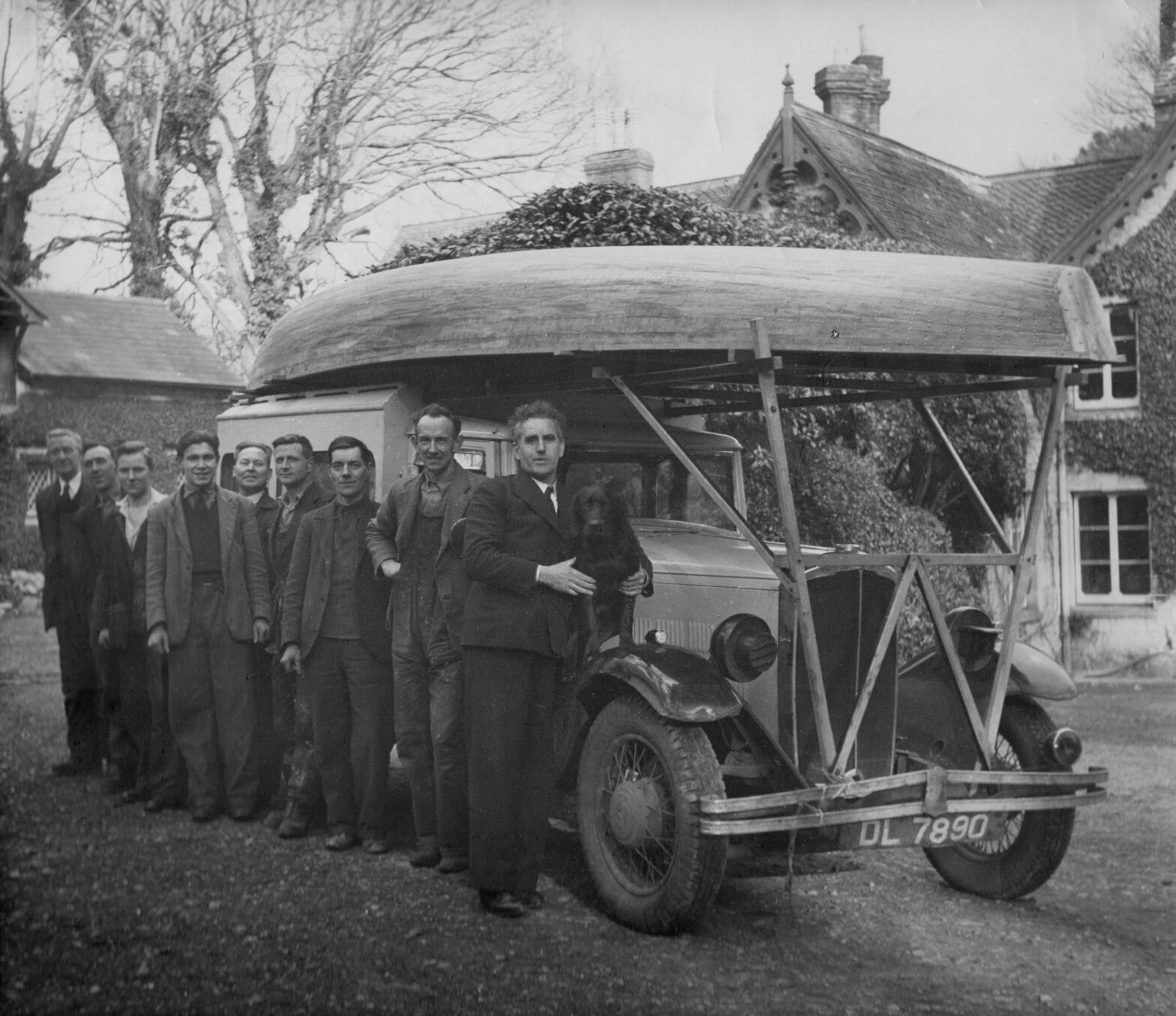Photo from the Uffa Fox Archive
During January 1942 Uffa Fox discusses proposals for a lifeboat twenty feet long with Director of Technical Services, Deputy Director Air Sea Rescue (Group Captain Waring, who had also been thinking about a lifeboat design with Lieutenant Robb RNVR), parachute and buoyancy suppliers and others. Uffa’s proposal appears to have shared some aspects with the ideas of to that Waring/Robb’s but it is unclear whether Uffa had seen their design. Uffa had met Lieutenant Robb, a boat builder and designer, at a yachting function and the idea of an airborne lifeboat was discussed.
As a result of these meetings the requirements were further clarified and Uffa asked to incorporate many changes. Chapter 2 p.10 of ‘Rescue from the Skies‘ quotes the resulting letter to Uffa and some of the changes/additions sought.
A prototype was built and a trial drop organised in April. There is little technical documentation surviving for Uffa’s prototype. The following was deduced by Stephen Brewster Daniels in ‘Rescue from the Skies’ from trial photographs and what documentation there is:
- 20 feet long
- beam equal to the flat underbelly of the Hudson which was about 4’3″
- straight sheerline
- less than the aeroplane’s wheel diameter (17 inches) ground clearance
- wide shallow transom and low freeboard
- two outboard motors in trunks
- steered by an oar [Editor note: this is probably incorrect as a design feature. Records show that the lower rudder pintle was damaged on the airfield due to low clearance beneath the Hudson so that Uffa had to resort to an oar as seen in the photographs]
- triangular mainsail on a sturdy mast about 1/4 length from the bow
- inflatable ‘turtle backed’ inflated buoyancy forward and aft
To overcome the problem of a boat descending by parachutes drifting downwind (and probably out of reach of the survivors), it was to be fitted with a rocket-fired weighted drogue attached to the bows to act as a sea anchor. To prevent the boat’s capsizing, buoyancy chambers were provided, these being inflated by a mechanism, triggered by the deployment of the parachutes, which opened the valves on CO2 bottles. It was foreseen that, in a rough sea, a crew might not even be able to see the lifeboat and, if they did manage to reach it, they could well find it impossible to remain alongside. To solve this problem, a rocket, which fired automatically upon impact with the sea, was installed on both beams, each rocket carrying 200 feet of buoyant line which was ejected on either side of the boat, the idea being that the survivors could simply allow their dinghy to drift downwind until they reached one of the lines which they could then use to haul themselves to the lifeboat.
The trial, with a Hudson, provided valuable insight into the design and clarified many of the detailed requirements. Although official trial reports are not available some of the greatest issues seem to have concerned low freeboard, the open transom, and ground clearance. The Hudson had severely limited space beneath it when on the ground, particularly at the back in way of the boat’s transom. Work immediately started on a revised design to address these issues.
